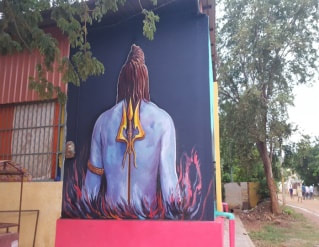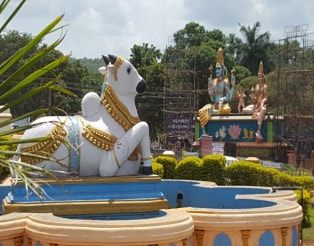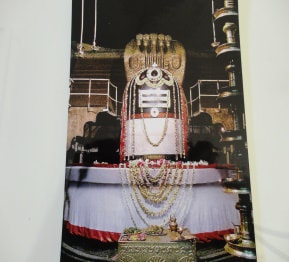|
Who is Shiva: In Hinduism, Shiva is worshipped throughout India and a few other countries as one of the most important deity. Shiva is prayed in both forms viz. “saakar form” (as Lord Shiva or Shanker in form of deity) and Nirakar (as Lingam, formless). Shiva literally means “auspiciousness, welfare”. He is represented as god of destruction as destruction is root of re-creation (rebirth). Saakar form of Shiva [1]: Shiva is depicted as under:
What are the attributes of Shiva: Tulsidas borne in Varanasi, city in UP, India, composed Ram Charit Manas in 15 – 16thcentury. He has explained the various attributes of Shiva in the devotional hymn “Rudrashtakam” appear in the Uttara Kand of Ram Charit Manas “(नमामि ईशम् निर्वाणरुपम् विभुम् व्यापकम् ब्रह्मवेदस्वरूपम्, । निजम् निर्गुणम् निर्विकल्पम् निरीहम् चिदाकाशमाकाशवासम् भजेऽहम् निराकारम् ओंकारमूलम् तुरीयम् गिरा ज्ञान गोतीतम् ईशम् गिरीशम् | करालम् महाकाल कालम् कृपालम् | गुणागार संसारपारम् नतोऽहम् ॥ तुषाराद्रि संकाश गौरम् गभीरम् । मनोभूत कोटिप्रभा श्री शरीरम् | स्फुरन्मौलि कल्लोलिनी चारु गङ्गा लसद् भाल बालेन्दु कण्ठे भुजङ्गा | चलत्कुण्डलम् भ्रू सुनेत्रम् विशालम् प्रसन्नाननम् नीलकण्ठम् दयालम् | मृगाधीश चर्माम्बरम् मुण्ड मालम् प्रियम् शंकरम् सर्वनाथम् भजामि ॥ प्रचण्डम् प्रकृष्टम् प्रगल्भम् परेशम्। अखण्डम् अजम् भानुकोटि प्रकाशम् त्रयः शूल निर्मूलनम् शूलपाणिम् भजेऽहम् भवानीपतिम् भावगम्यम् | कलातीत कल्याण कल्पान्तकारी सदा सज्जनानन्ददाता पुरारि । चिदानंद संदोह मोहापहारी| प्रसीद प्रसीद प्रभो मन्मथारी | न यावत् उमानाथ पादाराविन्दम् भजंतीह लोके परे वा नराणाम् | न तावत् सुखम् शांति सन्ताप नाशम् | प्रसीद प्रभो सर्वभूताधिवासम् | न जानामि योगम् जपम् नैव पूजाम् नतोऽहम् सदा सर्वदा शम्भुः तुभ्यम् । जरा जन्म दुःखौघ तातप्यमानम् प्रभो पाहि आपन्नमामीश शम्भो | रुद्राष्टकम् इदम् प्रोक्तम् विप्रेण हर तोषये । ये पठन्ति नरा भक्त्या तेषाम् शम्भुः प्रसीदति)” The above hymn explains the attributes of Shiva [3] as under:
Hence, Shiva is formless and also depicted as god of destruction. He is beyond time, at centre of universe, root of universal sound ‘Aum’ and re-birth, creator of Sanskrit language and natya & other Shastras and provides eternal bliss. Reference:
1 Comment
Mukta Gupta
12/3/2017 06:27:10 pm
Very well explained
Reply
Leave a Reply. |
Archives
May 2024
Categories |




 RSS Feed
RSS Feed